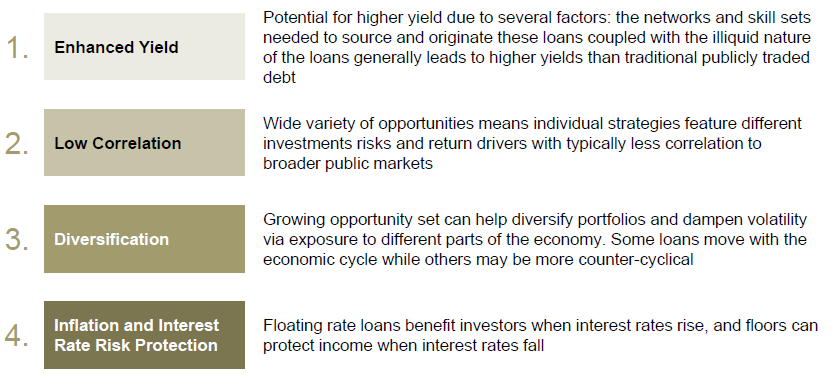Are Stock Investors Ready For More Market Volatility?

Table of Contents
Understanding the Current Market Landscape and Potential Triggers for Volatility
Several factors contribute to the current market climate and could trigger further volatility. Understanding these potential triggers is the first step in effective risk management.
Inflation and Interest Rate Hikes
Rising inflation continues to be a major concern, forcing central banks to implement aggressive interest rate hikes. This has significant repercussions for stock markets:
- Increased Borrowing Costs: Higher interest rates make it more expensive for businesses to borrow money, potentially hindering growth and impacting profitability. This can lead to lower stock valuations.
- Investor Sentiment: Rising rates often dampen investor sentiment, leading to a shift away from riskier assets like stocks towards safer options like bonds. This can create downward pressure on stock prices.
- Impact on Bond Yields: Higher interest rates increase bond yields, making bonds a more attractive investment, thus drawing investment away from the stock market. This can result in decreased demand and lower stock prices, especially for growth stocks. The interplay between interest rate risk and inflation risk necessitates careful analysis of your portfolio's bond holdings. The overall health of the bond market heavily influences the stock market.
Geopolitical Risks and Global Uncertainty
Geopolitical instability adds another layer of complexity to market forecasting. Ongoing conflicts and escalating tensions create significant uncertainty:
- Investor Confidence: Geopolitical events often shake investor confidence, leading to increased market volatility and potential sell-offs. The Ukraine conflict, for example, has significantly impacted energy prices and global supply chains.
- Supply Chain Disruptions: Conflicts and sanctions can disrupt global supply chains, leading to shortages, price increases, and impacting the profitability of businesses dependent on these chains.
- Energy Price Volatility: Geopolitical events can dramatically influence energy prices, impacting inflation and economic growth. This volatility can ripple through various sectors of the economy and influence investor decisions. The energy crisis underscores the importance of considering geopolitical risk in investment strategies.
Unexpected Economic Shocks
Unforeseen events, often referred to as "black swan events," can trigger sudden and significant market swings:
- Natural Disasters: Major natural disasters can disrupt economic activity and trigger market uncertainty, affecting industries like insurance and tourism.
- Unexpected Policy Changes: Sudden changes in government policies, both domestically and internationally, can create significant market volatility and investor uncertainty.
- Economic Downturns: Unexpected economic downturns, driven by factors like a sudden credit crunch or a major financial crisis, can cause widespread market declines. The unpredictable nature of these unforeseen circumstances makes diversification crucial.
Assessing Investor Preparedness for Increased Volatility
Understanding investor sentiment and employing sound risk management strategies are critical to weathering market volatility.
Investor Sentiment and Risk Tolerance
Current investor sentiment, often reflected in market sentiment indices, provides insights into market expectations. However, individual investor risk tolerance is equally crucial:
- Measuring Investor Confidence: Surveys and market data can help gauge overall investor confidence levels. Low confidence levels often indicate a higher likelihood of market volatility.
- Understanding Risk Tolerance: Risk tolerance is the level of risk an investor is willing to accept. Investors with a low risk tolerance might prefer safer investments during volatile periods.
Portfolio Diversification and Asset Allocation
Diversification is a cornerstone of effective risk management:
- Spreading Risk: A well-diversified portfolio across different asset classes (stocks, bonds, real estate, commodities, etc.) helps to mitigate the impact of negative movements in any single asset class.
- Strategic Asset Allocation: Determining the optimal allocation of assets across different classes depends on individual risk tolerance, investment time horizon, and financial goals. Hedging strategies can help further mitigate risk.
Understanding and Managing Your Investment Time Horizon
The investment time horizon significantly impacts risk management strategies:
- Long-Term vs. Short-Term: Long-term investors can typically withstand greater market fluctuations, while short-term traders may need more conservative strategies.
- Buy and Hold Strategy: For long-term investors, a buy-and-hold strategy can be effective in mitigating the impact of short-term volatility.
Strategies for Navigating Market Volatility
Several strategies can help investors navigate periods of increased market volatility:
Dollar-Cost Averaging (DCA)
DCA involves investing a fixed amount of money at regular intervals, regardless of market price fluctuations:
- Reducing Market Timing Risk: DCA helps reduce the risk of investing a lump sum at a market peak.
- Averaging Cost: By investing consistently, DCA averages the cost of your investments over time, potentially reducing the overall impact of volatility.
Rebalancing Your Portfolio
Periodically rebalancing your portfolio to maintain your desired asset allocation is essential:
- Taking Advantage of Price Swings: Rebalancing involves selling assets that have outperformed and buying those that have underperformed, taking advantage of price fluctuations.
- Maintaining Strategic Allocation: Rebalancing helps to maintain your strategic asset allocation and ensures you're not overly exposed to any single asset class.
Seeking Professional Financial Advice
Consulting with a qualified financial advisor offers numerous benefits:
- Personalized Strategies: A financial advisor can help develop a personalized investment strategy that aligns with your risk tolerance, financial goals, and investment time horizon.
- Navigating Uncertainty: They offer expert guidance and support in navigating periods of market uncertainty. They can provide valuable insights into wealth management and investment planning.
Conclusion
Market volatility is an inherent aspect of investing. Understanding its potential drivers, assessing your own preparedness, and employing appropriate risk management strategies are crucial for long-term success. Remember the importance of diversification, appropriate asset allocation, and the potential benefits of dollar-cost averaging. Are you ready for more market volatility? Proactively assess your investment strategies and risk tolerance. Consider consulting with a financial professional to develop a personalized plan that helps you manage market volatility and achieve your financial goals. Take steps today to protect your investments and navigate the complexities of the market effectively.

Featured Posts
-
 5 Dos And Don Ts For Landing A Private Credit Job
Apr 22, 2025
5 Dos And Don Ts For Landing A Private Credit Job
Apr 22, 2025 -
 Strengthening Regional Security New Partnerships Between China And Indonesia
Apr 22, 2025
Strengthening Regional Security New Partnerships Between China And Indonesia
Apr 22, 2025 -
 Harvard Faces 1 Billion Funding Cut Trump Administrations Ire
Apr 22, 2025
Harvard Faces 1 Billion Funding Cut Trump Administrations Ire
Apr 22, 2025 -
 Anti Trump Protests Sweep The Us Citizen Voices
Apr 22, 2025
Anti Trump Protests Sweep The Us Citizen Voices
Apr 22, 2025 -
 Future Of Nordic Defense Collaboration Between Sweden And Finland
Apr 22, 2025
Future Of Nordic Defense Collaboration Between Sweden And Finland
Apr 22, 2025
Latest Posts
-
 Un Debut D Incendie Ravage La Mediatheque Champollion A Dijon
May 10, 2025
Un Debut D Incendie Ravage La Mediatheque Champollion A Dijon
May 10, 2025 -
 Implantation D Un Nouveau Vignoble De 2500 M A Dijon Valendons
May 10, 2025
Implantation D Un Nouveau Vignoble De 2500 M A Dijon Valendons
May 10, 2025 -
 Projets Viticoles A Dijon Plantation De 2500 M Aux Valendons
May 10, 2025
Projets Viticoles A Dijon Plantation De 2500 M Aux Valendons
May 10, 2025 -
 Dijon 2500 M De Vignes Plantes Au Secteur Des Valendons
May 10, 2025
Dijon 2500 M De Vignes Plantes Au Secteur Des Valendons
May 10, 2025 -
 Extension Viticole A Dijon 2500 M Aux Valendons
May 10, 2025
Extension Viticole A Dijon 2500 M Aux Valendons
May 10, 2025
